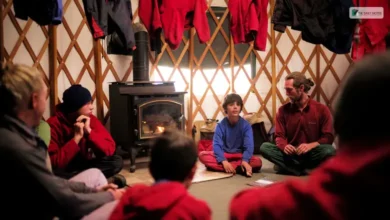Wilderness Therapy Death List: Transforming Lives in Nature’s Embrace

Introduction
Wilderness therapy, an alternative form of rehabilitation, uses nature expeditions to address behavioral and psychological issues in adolescents and young adults. These programs often seek to remove individuals from their regular environment to confront personal challenges in a setting that encourages self-reliance and emotional growth. However, the inherent risks of outdoor environments, combined with intense physical and emotional challenges, have led to serious incidents, sparking a debate on the efficacy and safety of wilderness therapy.
The Nature of wilderness therapy death list
Wilderness therapy programs vary widely in their approach, duration, and intensity, but most share common elements: outdoor living, survival skills training, and therapeutic activities designed to foster personal growth. Proponents argue that the immersive nature of these programs can break through barriers unreachable in traditional therapy settings, offering transformative experiences that lead to lasting change.
Reported Incidents and Concerns
Despite the positive testimonials, the wilderness therapy industry has faced criticism following reports of deaths and injuries among participants. These incidents have raised significant concerns about the safety measures and therapeutic practices employed by some programs. The causes of such tragedies have ranged from exposure to harsh weather conditions, inadequate medical care, to the physical demands of the programs exceeding the capabilities of participants.
Industry Response and Regulation
In response to these incidents, the wilderness therapy industry, along with regulatory bodies, has taken steps to enhance safety and oversight. This includes the development of accreditation standards, the implementation of rigorous staff training, and the establishment of protocols for emergency response. Programs are increasingly emphasizing pre-program assessments to ensure that participants are physically and psychologically suited for the challenges they will face.
The Debate on Efficacy and Ethics
The deaths associated with wilderness therapy have fueled a broader debate on the efficacy of such programs and the ethical considerations of placing at-risk youth in potentially dangerous situations. Critics argue that the lack of consistent regulation across states and countries allows for the operation of programs that may not prioritize participant safety or therapeutic integrity. Meanwhile, supporters advocate for the profound impact wilderness therapy can have, emphasizing the importance of stringent standards and oversight.

Moving Forward: Safety, Oversight, and Healing
The future of wilderness therapy death list hinges on the industry’s ability to guarantee the safety and well-being of its participants. This involves not only adhering to high operational standards but also fostering a culture of transparency and accountability. As research continues to explore the outcomes of wilderness therapy, it is crucial for programs to balance the therapeutic benefits with the imperative to protect those they serve.
Conclusion
wilderness therapy death list remains a polarizing subject, offering undeniable benefits to many while also carrying risks that have led to tragic outcomes. The loss of life in any therapeutic context is a profound tragedy, one that demands reflection, responsibility, and change. As the industry evolves, the hope is that wilderness therapy can continue to offer a path to healing, grounded in the utmost standards of care and safety. For those considering wilderness therapy, thorough research, and engagement with accredited, reputable programs are essential steps in making an informed decision that prioritizes the well-being of participants above all.




